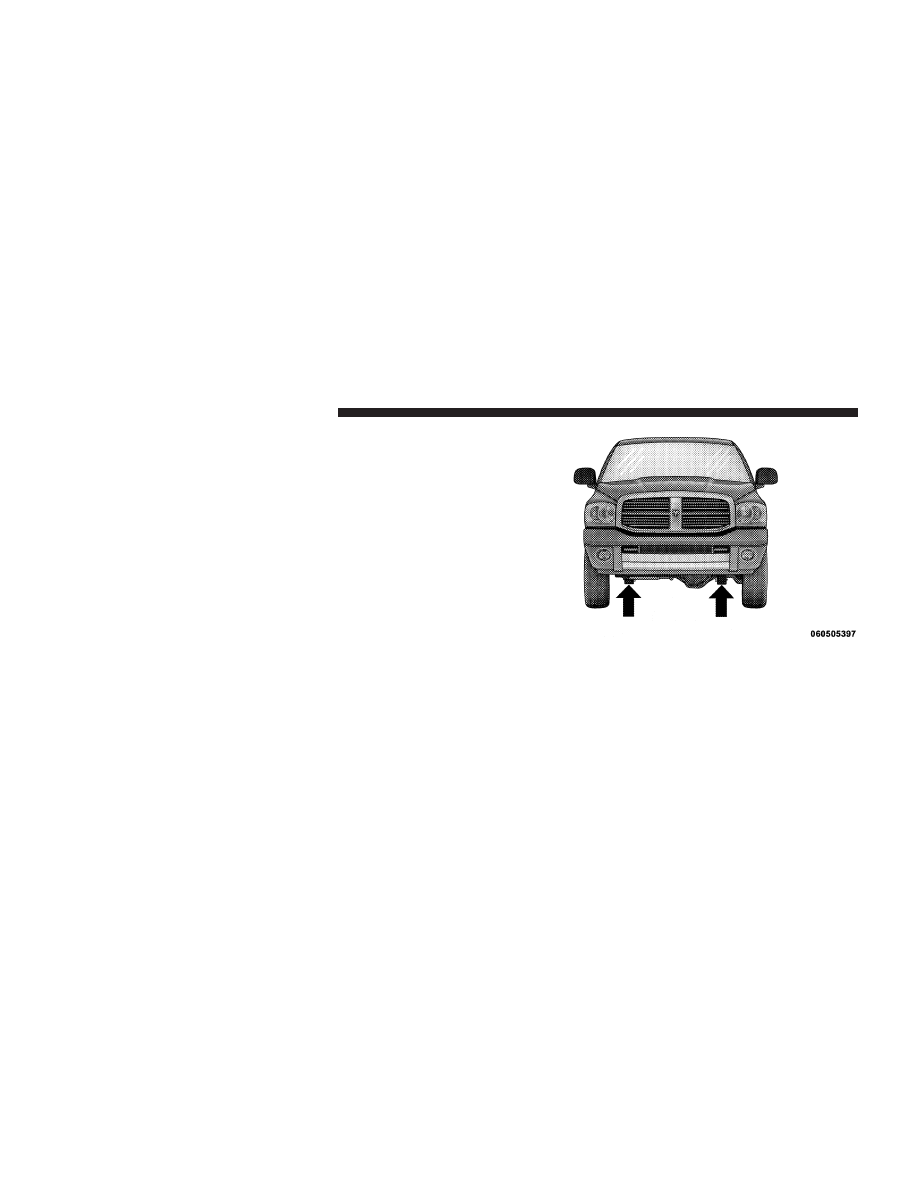Dodge 2500 (2009 year). Manual - part 26

• Operate the jack using the jack drive tube and the
wheel wrench. The tube extension, may be used, but
is not required.
• For 2500/3500 4x4 series trucks, when changing the
front wheel, assemble the jack drive tube to the jack
and connect the drive tube to the extension tube.
Place the jack under the axle as close to the tire as
possible with the drive tubes extending to the front.
Connect the jack tube extension and wheel wrench.
• For all trucks, when changing a rear wheel, as-
semble the jack drive tube to the jack and connect
the drive tube to the extension tube. Place the jack
under the axle between the spring and the shock
absorber with the drive tubes extending to the rear.
4x4 Jacking Location
412
WHAT TO DO IN EMERGENCIES